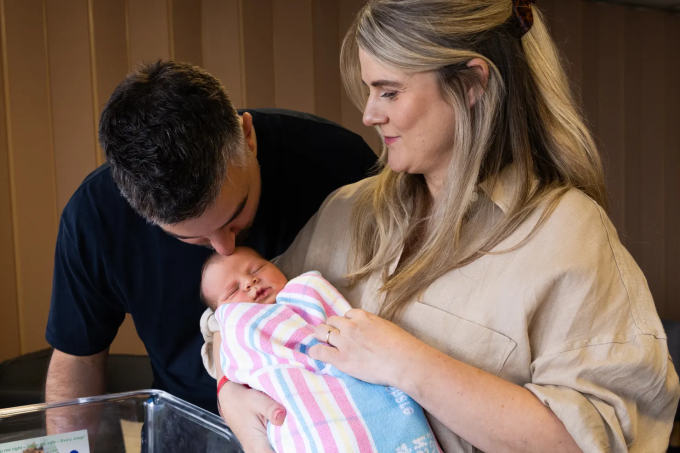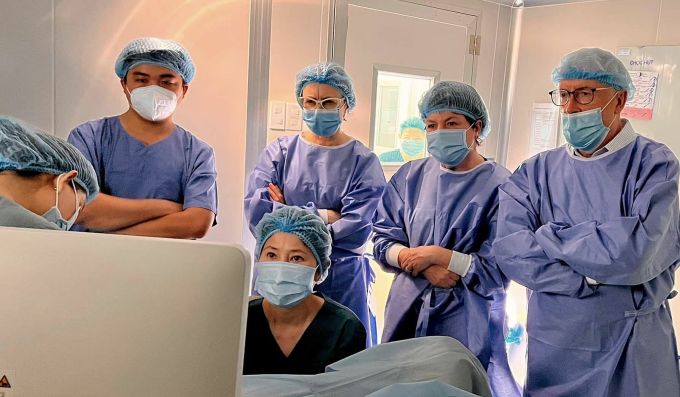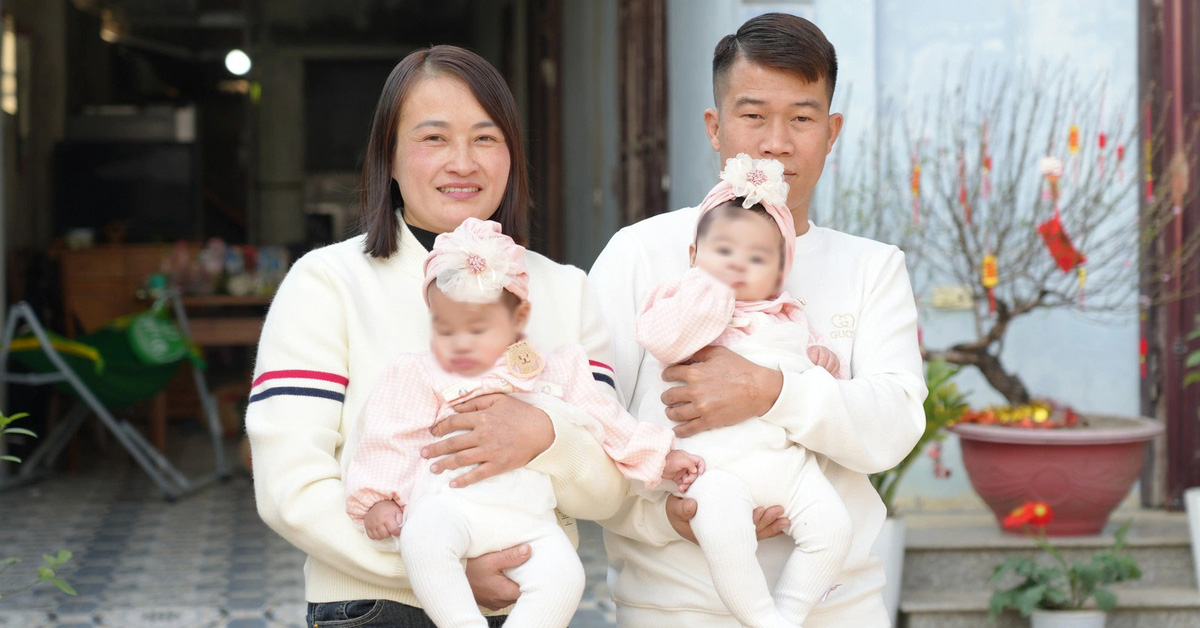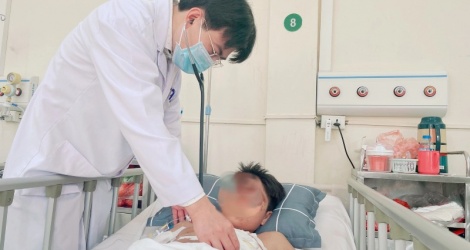Bonnie, the first Australian baby born thanks to IVM technology transferred by Vietnamese doctors, opens up hope for thousands of infertile women in this country.
Bonnie, weighing 4.1 kg, was born at the Royal Women's Hospital last week, and is considered a "miracle", according to The Sydney Morning Herald - Australia's oldest and leading daily newspaper.
Leanna, the baby's mother, became the first Australian woman to give birth through CAPA-IVM (in vitro fertilization). This is considered a "breakthrough alternative" to IVF (in vitro fertilization). Leanna had previously failed with IVF.
"The most amazing thing is that Bonnie is here and giving hope to so many people," the mother said.

Baby girl Bonnie with her parents. Photo: The Sydney Morning Herald
IVF requires women to take drugs to stimulate the follicles to mature before they are removed from the ovaries for fertilization. Meanwhile, IVM involves taking tiny immature eggs from the follicles, taking them out and growing them in a test tube, then fertilizing them with sperm to form embryos as usual.
With this new technique, patients do not use ovarian stimulation drugs or use very little drugs, and it only takes two days to harvest eggs, instead of 2-4 weeks like IVF. Thanks to not having to spend money on ovarian stimulation injections, treatment costs are significantly reduced.
Professor Rob Gilchrist, University of New South Wales, one of the "designers" of the first CAPA-IVM program in Australia, said the first baby born was the result of collaboration between scientists at My Duc Hospital (HCMC) and Belgium.
"IVF has helped millions of children around the world, but many women cannot do this technique," Professor Gilchrist said. For people with polycystic ovaries, when injected with drugs for IVF, the ovaries will be stimulated, developing too many follicles, causing discomfort, abdominal distension, difficulty breathing, and even life-threatening. In addition, people with certain types of cancer, if using drugs to stimulate the ovaries, will produce more estrogen - a hormone developed by the follicles, causing the cancer to grow faster. Therefore, many patients after cancer treatment do not dare to think about having children.
IVM opens up the hope of becoming mothers for thousands of Australian women with polycystic ovary syndrome and cancer fighters. Professor Bill Ledger, Head of the Department of Reproductive Medicine, Royal Women's Hospital, said the hospital is ready to transfer IVM technology to colleagues in this country in the hope of giving birth to more babies.
Referring to the results of transferring IVM technology to Australian colleagues, Dr. Ho Manh Tuong, My Duc Reproductive Support Unit, proudly said: "Previously, Vietnamese doctors went to Australia to learn new techniques to treat Vietnamese people. Now we are happy and proud because the opposite has happened."
According to Dr. Tuong, the transfer project began in 2018, with Australian doctors coming to My Duc Hospital to learn IVM techniques. The implementation process was hampered by the Covid-19 outbreak. In 2022, after the pandemic, Australia sent four people to Vietnam to learn IVM according to the latest protocol and returned home to successfully implement it, helping a number of pregnant women.
Vietnam has applied IVM in infertility treatment since 2007. Ten years later, Vietnam became the country that performs IVM the most and most successfully in the world, transferring the technique to many countries such as Australia, the US, France, Belgium, Spain, Singapore...

Experts from the University of New South Wales study IVM techniques at My Duc Hospital, 2022. Photo: Provided by the hospital
IVM is currently indicated for patients with polycystic ovary syndrome, patients with many ovarian follicles, people who need to store eggs and preserve fertility for cancer treatment, patients who are resistant to ovarian stimulation drugs, young patients with many ovarian follicles...
The disadvantage of this technique is that it is difficult to perform and the number of embryos created is small. If the embryo transfer fails many times or all the frozen embryos are used up, the aspiration must be performed again from the beginning.
Le Phuong
Source link





























































Comment (0)